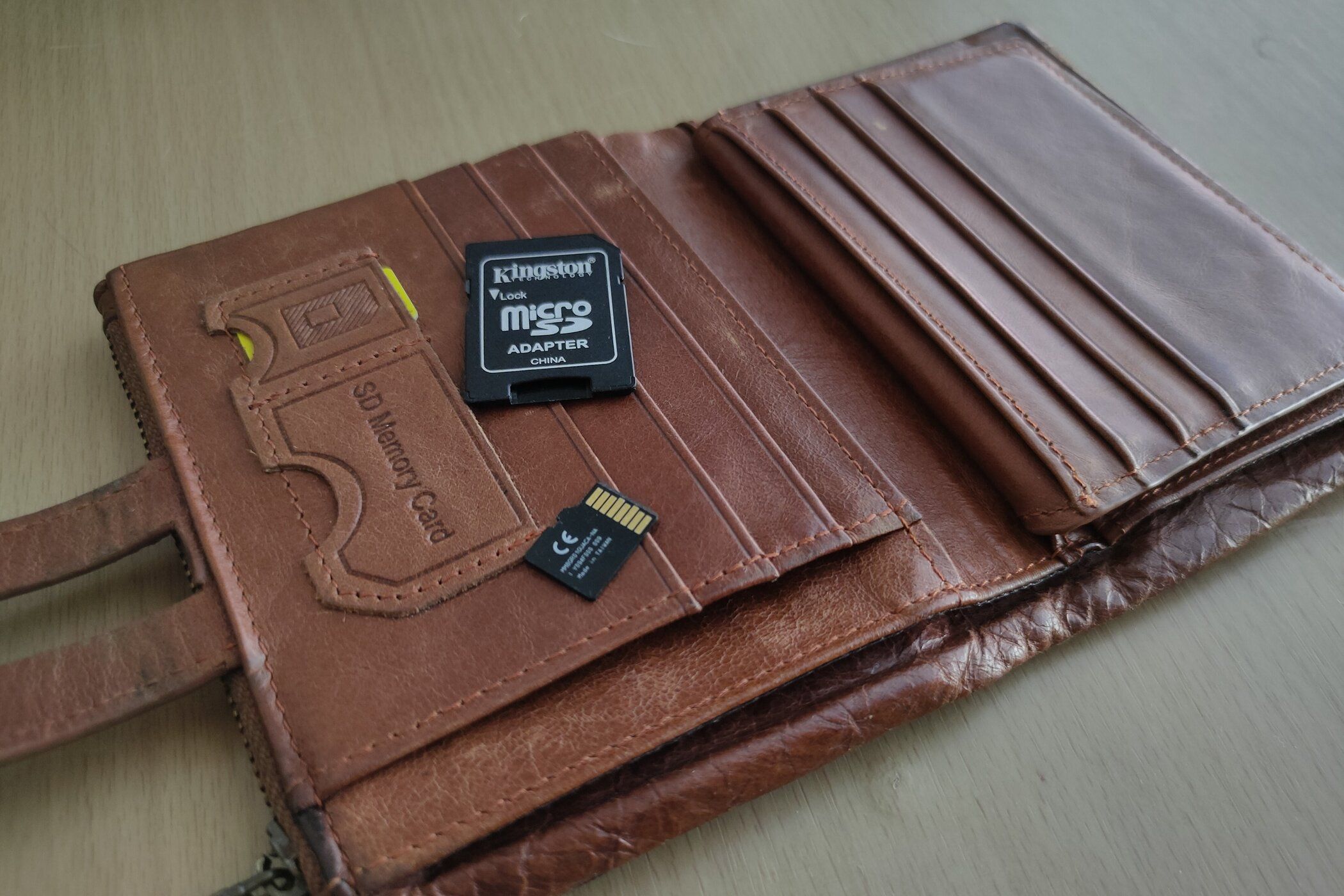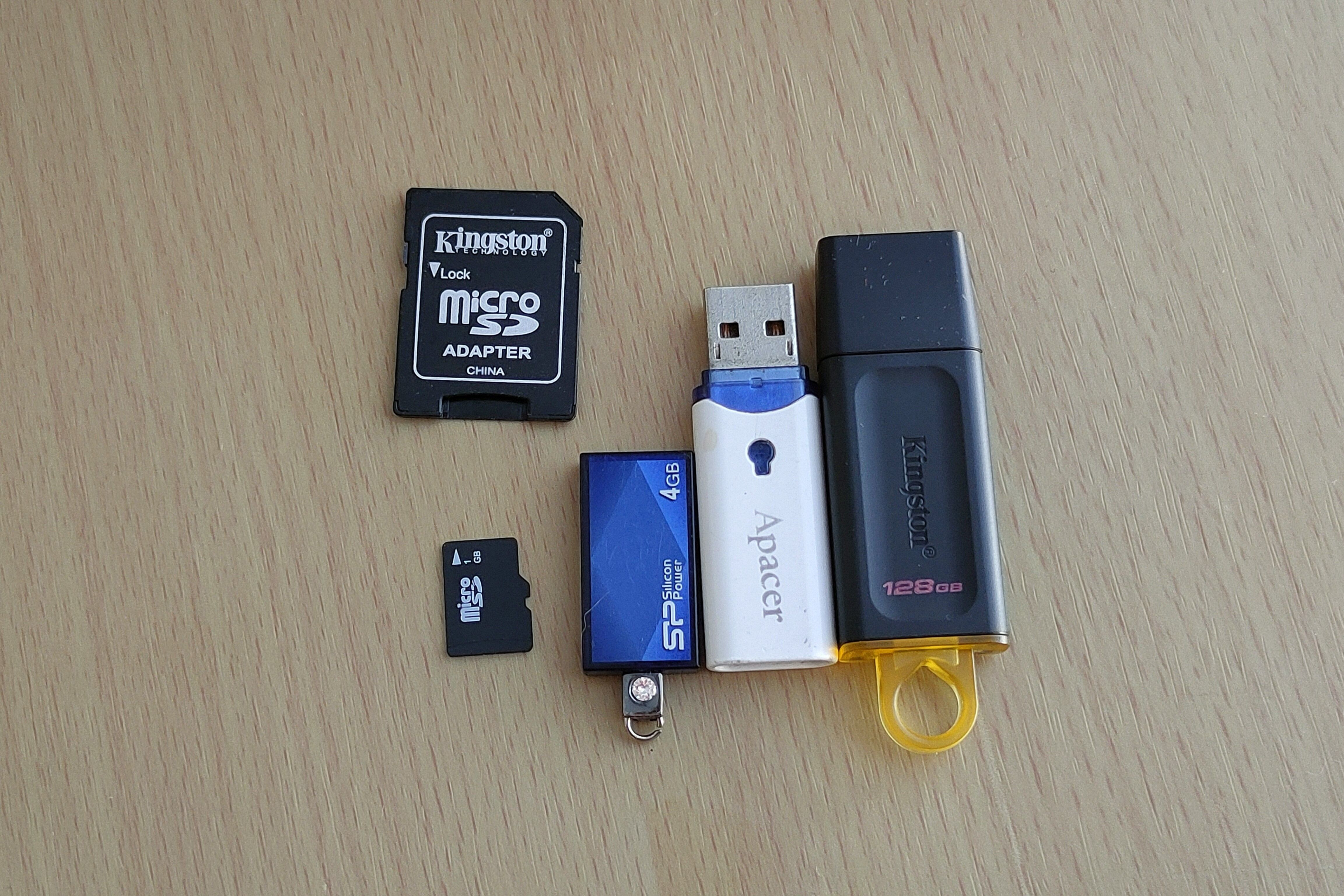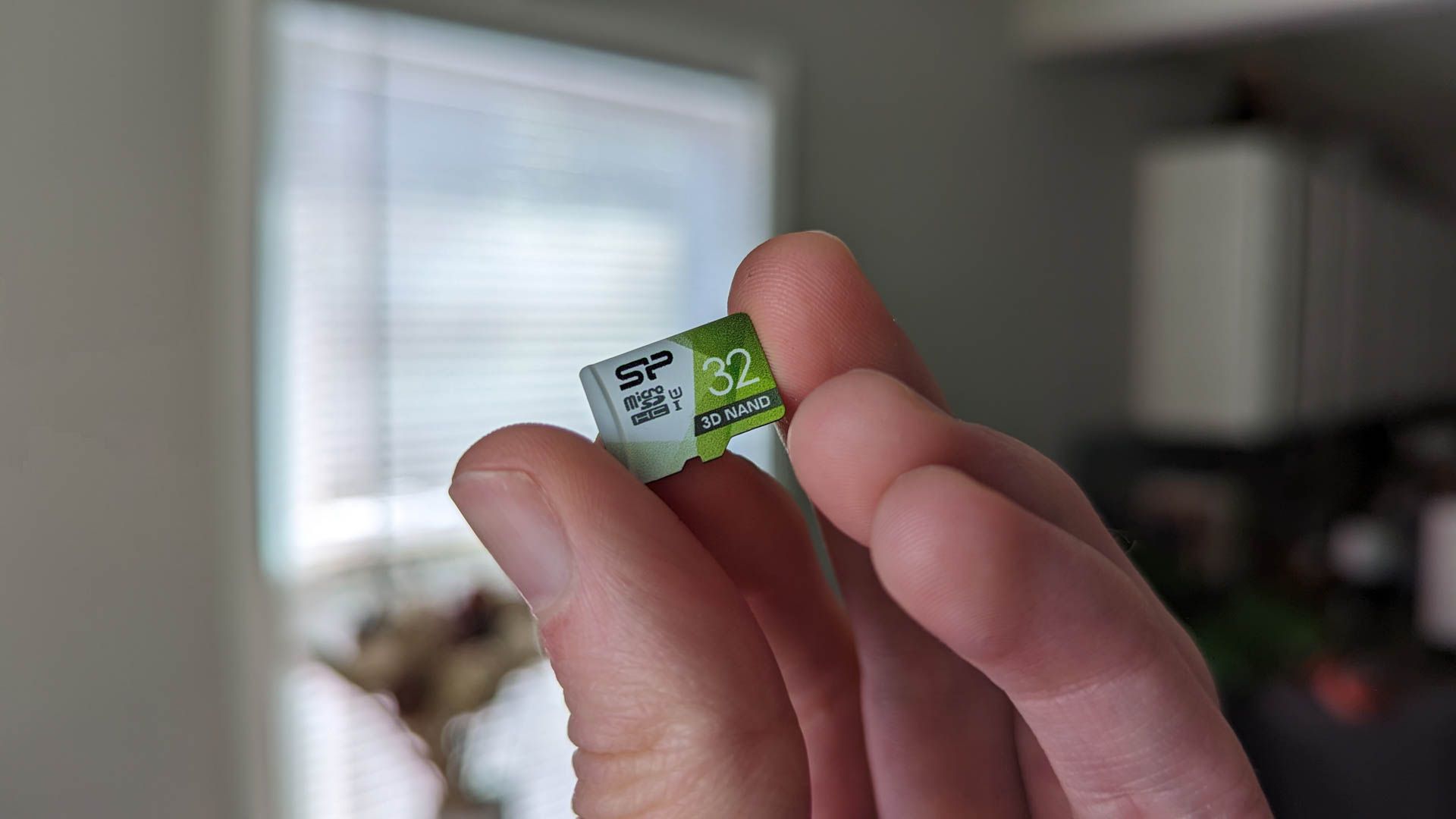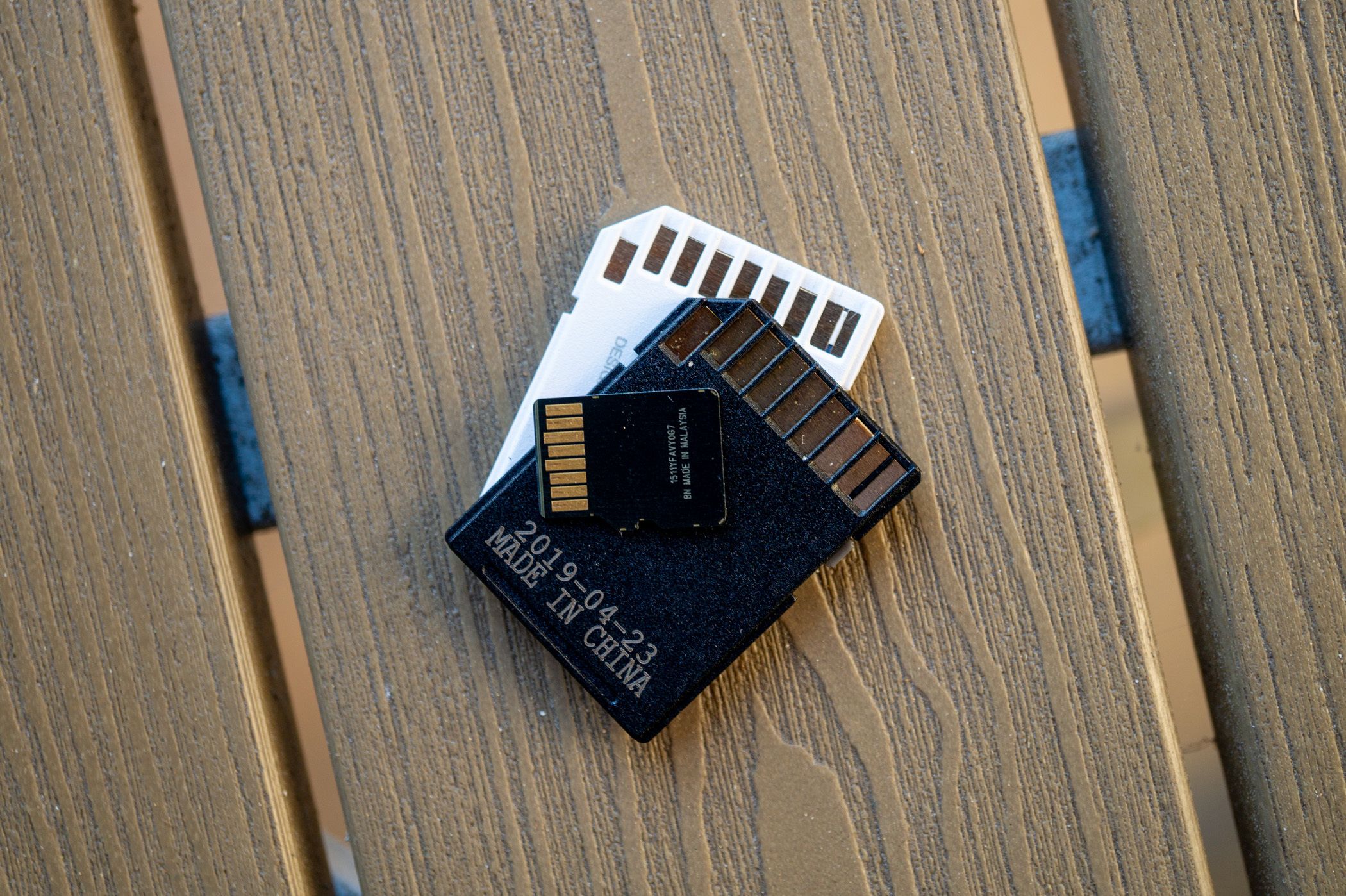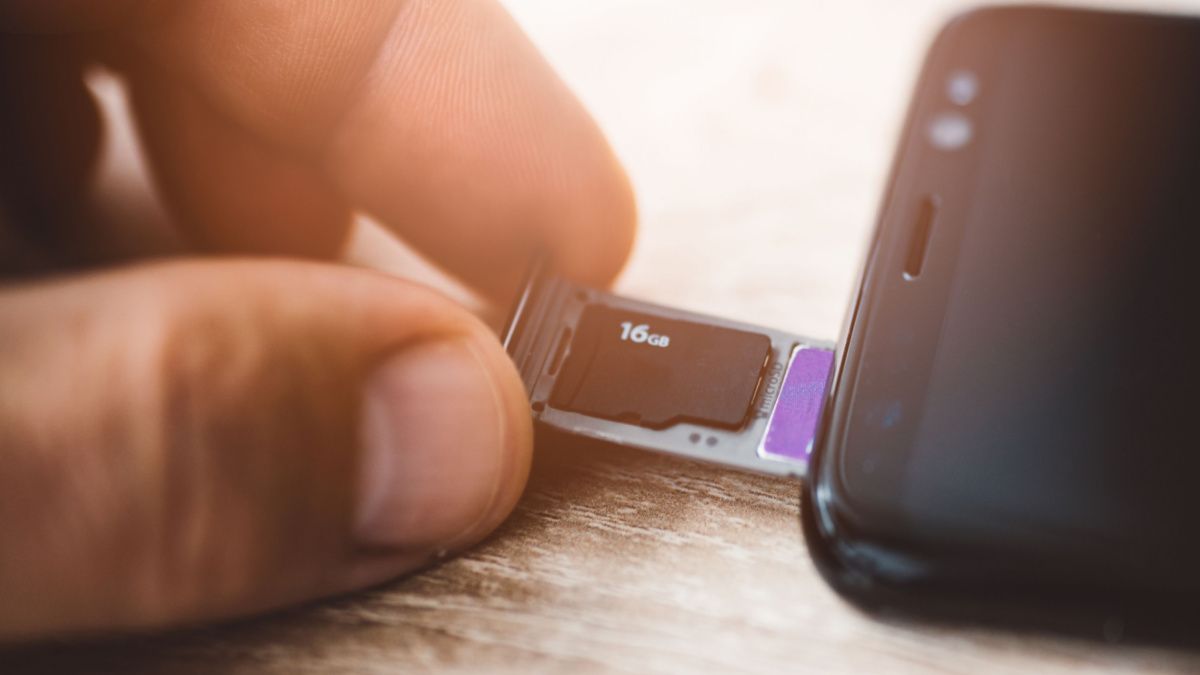Key Takeaways
- SD cards can hold up to 2TB of data, making them portable and useful for quick data transfers.
- They can outperform USB flash drives in random read and write speeds, making them a better choice for running apps directly.
- SD cards are hot-swappable, which makes them great for photographers, gamers, and musicians.
SD cards have long been a staple in digital storage. While they’re still used by photographers, handheld gamers, and enthusiasts, they’ve fallen out of the mainstream since the moment phones stopped shipping with microSD card slots. I believe they deserve to be back in the spotlight.
A Terabyte in Your Wallet
My favorite thing about SD cards is that they’re so small that you can put one into a paper-thin wallet and hardly notice it, yet they can store vast amounts of data. Regular-size SD cards are already tiny, but microSD cards are absolutely minuscule; you can hold one at the tip of your finger. It’s truly impressive that manufacturers have somehow managed to squeeze in 1.5TB and even 2TB worth of storage.
For some context, my whole PC has 1.5TB worth of storage. Equipped with a high-capacity microSD card, I could literally carry over a dozen of my favorite games, my whole writing portfolio, and over 10,000 pictures of my cats with me at all times. I could always have all of my important data with me, and I’d never have to think about it.
Moreover, SD cards can always come in handy if you need to do a quick data transfer from someone else’s device, such as at work or in school. For instance, I’ve been carrying an empty 1GB microSD card and SD card adapter in my wallet for years.
If you decide to carry an SD card with you, ensure it doesn’t contain any sensitive data in case it’s lost.
These modern, high-capacity microSD cards aren’t your regular run-off-the-mill storage devices, either, as most of them have reasonably fast transfer rates. It’s no Thunderbolt 5, but V90 SD cards can do a minimum of 90MB/sec, enough to record 8K video directly to the SD card.
Fast SD cards are awesome for a lot of things, as you can transfer files from one device to another in a short amount of time. For instance, if you go to a LAN party and need to get a game quickly onto your laptop, you could create a copy from a PC that already has the game, paste it onto your laptop, and start playing in just 15–20 minutes. It’s miles faster than downloading the game from the web, and you wouldn’t steal internet bandwidth from your friends.
Better Than USB Flash Drives
Almost everything I’ve said so far also rings true for USB flash drives. USB flash drives are also reasonably small, have large storage capacities, and can potentially reach higher transfer speeds thanks to newer USB interfaces. This SanDisk 1TB USB flash drive can reach read speeds of up to 400MB/s. Not to mention that the USB interface is ubiquitous, in no small part, thanks to USB-C.
I love USB flash drives, and I use them all the time, but SD cards are simply better in most regards. I already mentioned how tiny a microSD card is, but it really puts things into perspective when you see them next to each other.
My new 128GB Kingston Exodia USB flash drive is huge and has a ridiculously large keychain loop, so I just carry it around in my pocket. The smallest of the three fits onto my keychain, but it’s still too big for my wallet, whereas I don’t even notice the microSD card when I have it on me.
The other benefit of microSD cards is that they’re significantly faster than USB flash drives at random read and write speeds. Random reads and writes are incredibly important when running an app directly from the external storage device, such as when you try to play a game on a handheld directly from the SD card instead of moving it to the handheld’s internal storage. USB flash drives excel at sequential reads and writes, which is great for file transfers, but they’re not great at running apps.
Avram Piltch from Tom’s Hardware demonstrated the difference between an SSD, microSD, and USB flash drive on a Raspberry Pi 4. He found that the USB drive is the only storage device that you can’t use to run the OS, as it results in very slow and unresponsive performance.
The last argument in favor of microSD cards is standardization. The SD Association sets the standards for various SD card specifications. This includes clearly defined speed classes that ensure consistent performance, which makes shopping for a microSD card a stress-free experience. If your device calls for a UHS-II U3 card, you can get a microSD card with that specification (or better), knowing it’ll work as expected.
In contrast, USB flash drives often highlight their maximum potential speeds, which don’t necessarily reflect their real-world performance. The USB interface is standardized, but the speed ratings that flash drives promise are not. Just because a USB flash drive uses the USB 3.2 connector doesn’t mean that it can hit data transfer rates of up to 20Gbps.
Thanks to the fast random read and write speeds, you can run most apps and games without significant performance issues directly from the SD card. If you use a handheld, you can have a bunch of microSD cards with different games installed and easily switch between them, reducing your reliance on internal storage. Most of the time, you don’t have to reboot the device to get the games working after swapping the SD card.
If you’re a photographer, you know how beneficial hot-swapping SD cards is. When you run out of storage, you can remove the filled SD card and pop a fresh one in, so your only limit is how many empty SD cards and charged batteries you have on hand. SD cards are also great for dash and security cameras because you can easily swap them out as they fill up if you don’t want the old recordings to get overwritten.
Another fun idea is to use SD cards for music similarly to how we use CDs—fill your SD cards with music, but instead of doing albums, you could do whole genres. You can buy a 10-pack of 8GB microSD cards and store around 2,000 MP3 files on each. It’s perfect if you want to have a large, categorized library of offline music.
Cheap Offline Storage
Like other forms of flash memory, SD cards can last at least 10 years under the right conditions. They’re not as permanent as M-DISCs, but 10 years is still a solid figure if you just use the SD card for redundancy.
In addition to the cloud, you should always have offline backups of your most important files on as many offline storage devices as possible, so SD cards are a cheap way to create redundant backups. Just remember to check the SD cards occasionally to make sure your data doesn’t get corrupted.
Expandable Storage in Phones Needs a Comeback
While SD cards aren’t going anywhere anytime soon, they are undoubtedly declining in popularity, and I think that it’s a shame. It speaks volumes that you can’t find a flagship phone with an SD card slot anymore; they’re only available on budget and mid-range devices like the OnePlus Nord N30 5G.
I miss times when I could expand my phone’s internal storage by offloading data to a microSD card. I ran into this issue last week when I maxed out my phone’s storage. I had to offload 40GB worth of photos and videos to my PC and USB flash drive, which means I could no longer view them directly on my phone.
If we gave SD cards the same treatment that we gave to USB, we would have SD card slots and readers on all of our devices. There was a time when PCs and laptops came standard with SD card slots, but that’s no longer the case.
It’s a shame, really, because SD cards are awesome. They’re tiny, so they could bridge the gap between mobile and non-mobile devices. Imagine you could transfer data from your PC onto your SD card and then pop it into your phone to transfer or use the data without having to rely on a USB cable or Wi-Fi router. Simple, convenient, and sadly overlooked.


